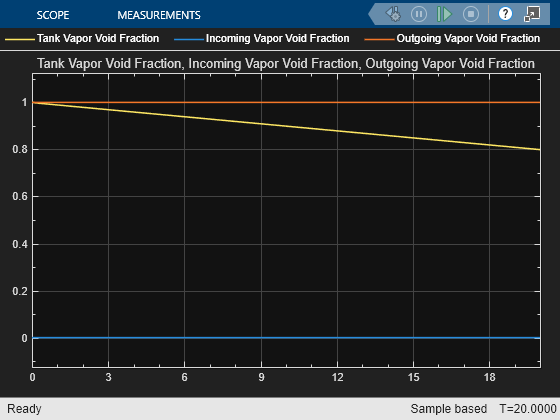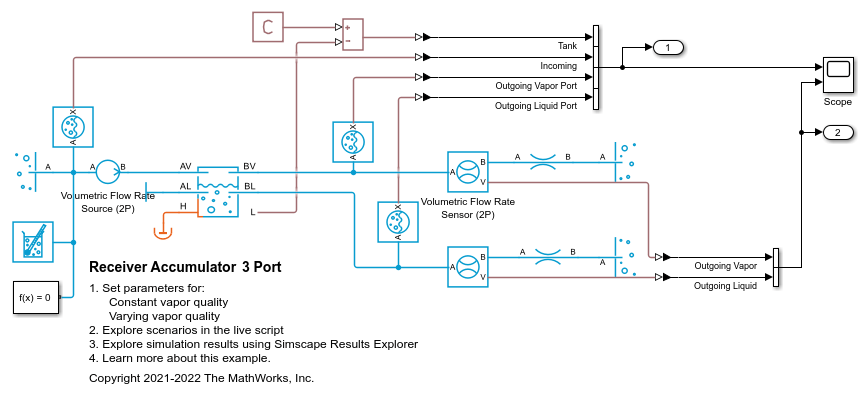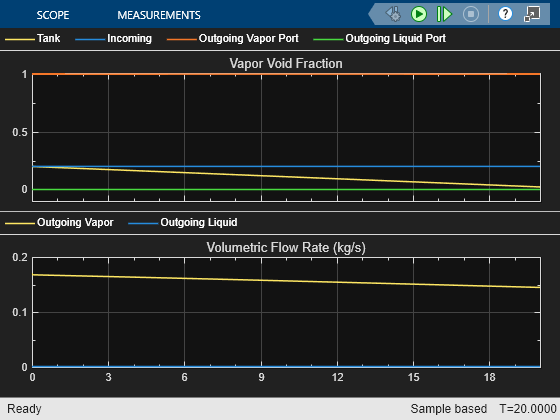Receiver Accumulator
This example shows the liquid and vapor separation using the Receiver Accumulator (2P) block. The Receiver Accumulator (2P) block models a container of fluid in a two-phase fluid network with separate liquid and vapor ports. In an HVAC system, when this tank is placed between a condenser and an expansion valve, it acts as a receiver. Liquid connections to the block are made at ports AL and BL. When the tank is placed between an evaporator and a compressor, it acts as an accumulator. Vapor connections to the block are made at ports AV and BV. The fluid in the container can be fully liquid, fully vapor, or a mixture of both. Mass and energy exchange can occur between the fluid phases due to vaporization and condensation.
The physical signal port L of the Receiver Accumulator (2P) block reports the liquid volume fraction of the total container volume. In this example the vapor volume fraction of the signals connected to the receiver accumulator are reported using Vapor Quality Sensors. To create comparable plots for all the monitored values, the Vapor Quality sensor are set to report the vapor void fraction in the signals and the liquid volume fraction reported from the tank is converted to vapor volume fraction using a PS Subtract block.
Simple 2 Port Configuration
This model demonstrates the basic function of the Receiver Accumulator (2P) block by connecting 2 of the 4 ports of the block. Fluid with a low void fraction is sent into port AV. The plot shows that regardless of the void fraction inside the Receiver Accumulator (2P) block, port BV outputs only vapor, provided there is some vapor present in the tank.

Simulation Results from Scopes

3 Port Configuration
This configuration shows the Receiver Accumulator (2P) block with 3 ports connected, 1 incoming port and 2 outgoing ports. This model shows the separation of the liquid and vapor within the Receiver Accumulator (2P) block. It can be seen that as the vapor void fraction in the tank changes the vapor void fraction at ports and the mass flow rate out of the ports AV and BV remain constant and the mass flow rate out of the ports changes to adjust for the vapor void fraction of the tank.

Simulation Results from Scopes

See Also
Receiver Accumulator (2P) | 3-Zone Pipe (2P)